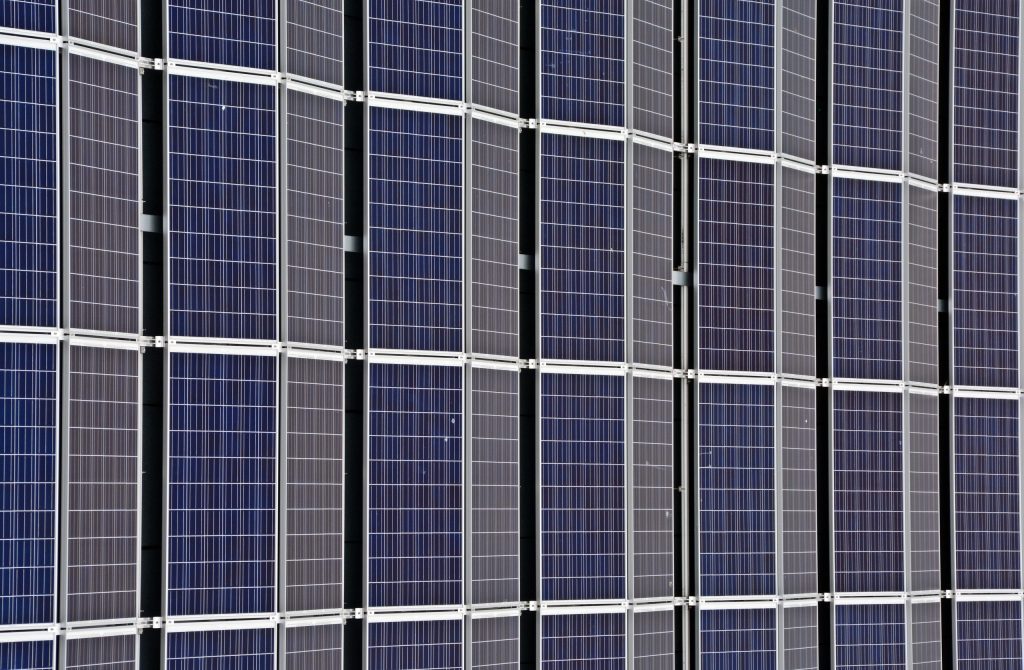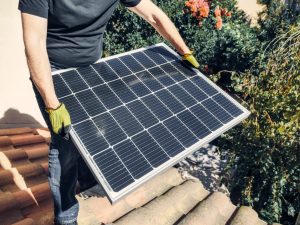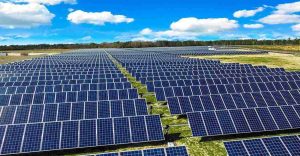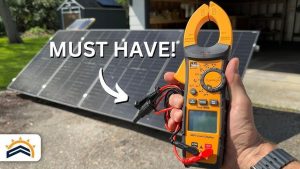How Long Does It Take for Solar Panels to Pay for Themselves?

How Long Does It Take for Solar Panels to Pay for Themselves?
How Long Does It Take for Solar Panels to Pay for Themselves?
Solar panels have become a popular choice for environmentally conscious individuals looking to reduce their carbon footprint and save on energy costs. Understanding the time it takes for solar panels to pay for themselves commonly known as the payback period is crucial for those considering this sustainable investment. How Long Does It Take for Solar Panels to Pay for Themselves?
Introduction
Investing in solar panels is not just about harnessing clean energy; it also a financial decision. The payback period or the time it takes for the initial investment to be recouped through energy savings varies based on several factors.
Factors Influencing Payback Period
Initial Installation Costs
The upfront cost of installing solar panels is a significant factor affecting the payback period. However advancements in technology and government incentives can offset these costs.
Government Incentives and Rebates
Various governments offer incentives and rebates to promote solar energy adoption. Understanding and utilizing these financial benefits can significantly reduce the payback time.
Energy Production Efficiency
The efficiency of solar panels in converting sunlight into electricity directly impacts the payback period. Investing in highefficiency panels can shorten the time it takes to see a return on investment.
Geographic Location and Sunlight Exposure
The amount of sunlight a location receives plays a crucial role. Regions with more sunlight generally experience a shorter payback period due to increased energy production.
Calculating the Payback Period
Understanding the basic formula for calculating the payback period is essential. It is calculated by dividing the initial investment by the annual savings on electricity bills. Let break down this formula with an example:
Payback Period=Initial InvestmentAnnual SavingsPayback Period=Annual SavingsInitial Investment
For instance if the initial investment is $20000 and the annual savings amount to $2500 the payback period would be 200002500=8250020000=8 years.
Decreasing Payback Time
Advancements in solar technology increased energy production efficiency and supportive government policies are contributing to a decrease in the payback time for solar panels.
Advancements in Solar Technology
Continuous innovations in solar technology lead to more efficient and costeffective panels shortening the time it takes to recover the initial investment.
Increased Energy Production Efficiency
Higher energy production efficiency means more electricity generation accelerating the payback period for solar panels.
Government Policies Supporting Renewable Energy
Government initiatives such as tax credits and feedin tariffs further reduce the financial burden on individuals making solar panels a more attractive investment.
Financial Benefits Beyond Payback
The advantages of solar panels extend beyond the payback period making them a wise investment in the long run.
Longterm Savings on Electricity Bills
While the payback period is crucial it equally important to consider the longterm savings on electricity bills which continue after the initial investment is recovered.
Increased Home Value
Homes equipped with solar panels often have higher resale values. This added property value contributes to the overall financial benefits.
Environmental Impact and Sustainability
Beyond financial gains investing in solar panels promotes environmental sustainability by reducing reliance on nonrenewable energy sources.
Challenges in Determining Payback Period
Despite the clear benefits determining the precise payback period for solar panels can be challenging due to various factors.
Fluctuating Energy Prices
The unpredictable nature of energy prices can impact the accuracy of payback period calculations introducing an element of uncertainty.
Technological Advancements Affecting Calculations
Rapid technological advancements may lead to improved solar efficiency affecting the predicted payback time. Staying informed about the latest developments is essential for accurate assessments.
Reallife Case Studies
Examining reallife case studies provides valuable insights into the practical aspects of solar panel investments.
Examples of Successful Solar Panel Investments
Instances where individuals or businesses have successfully benefited from solar panel installations serve as inspiring examples for potential investors.
Learning from Challenges and Setbacks
Understanding challenges and setbacks in some cases can help future investors make informed decisions and mitigate potential risks.
Tips for Faster Payback
Considering specific factors can contribute to a faster payback period for solar panels.
Optimal System Size
Determining the rightsized solar panel system based on energy needs ensures optimal efficiency and quicker returns on investment.
Regular Maintenance
Proper maintenance and care of solar panels maximize their lifespan and overall performance enhancing the payback period.
Maximizing Energy Consumption Efficiency
Implementing energyefficient practices within the household further accelerates the payback period by optimizing energy savings.
Common Misconceptions
Addressing common misconceptions about solar panels is crucial to encourage informed decisionmaking.
Clearing Up Myths About Solar Panels
Dispelling myths about solar panels such as high maintenance costs or inefficiency helps potential investors make confident choices.
Addressing Concerns That May Discourage Investment
Understanding and addressing concerns such as the impact on property aesthetics or the reliability of solar technology is essential for overcoming potential obstacles.
Future Trends in Solar Technology
Staying informed about future trends in solar technology is key for making sustainable forwardthinking investments.
Innovations and Research in the Solar Industry
Ongoing research and innovation in the solar industry may introduce new technologies potentially impacting the efficiency and affordability of solar panels.
Predictions for the Future of Solar Energy
Experts predict continued growth in solar energy adoption with advancements making it an increasingly viable and accessible option for individuals and businesses.
Community and Corporate Initiatives
The collective effort of communities and corporations plays a crucial role in promoting sustainable energy practices.
Collective Efforts for Sustainable Energy
Community initiatives such as solar cooperatives amplify the impact of solar energy adoption making it a communal effort.
Companies Adopting Solar Solutions
Corporate adoption of solar solutions not only demonstrates environmental responsibility but also encourages employees and customers to consider sustainable practices.
Choosing the Right Solar Panel System
Selecting the right solar panel system requires careful consideration of individual energy needs and thorough research.
Understanding Personal Energy Needs
Assessing energy consumption patterns helps determine the appropriate system size optimizing the benefits and payback period.
Researching Reputable Suppliers and Installers
Choosing reliable suppliers and installers ensures the quality and efficiency of the solar panel system contributing to a smoother and more successful investment.
Impact on the Environment
Beyond financial considerations the environmental impact of solar panels is a critical aspect to consider.
The Carbon Footprint of Solar Panels
Solar panels contribute significantly less to greenhouse gas emissions compared to traditional energy sources promoting a cleaner environment.
Comparative Analysis with Traditional Energy Sources
Comparing the environmental impact of solar panels with conventional energy sources highlights the sustainability and ecofriendly nature of solar energy.
Educational Outreach Programs
Increasing awareness about solar energy through educational programs fosters a more informed and environmentally conscious society.
Increasing Awareness About Solar Energy
Educational initiatives aimed at schools communities and businesses create awareness about the benefits of solar energy and its longterm impact.
Encouraging Community Involvement in Renewable Energy Projects
Involving communities in renewable energy projects fosters a sense of shared responsibility and contributes to a sustainable future.
Final Word
In the payback period for solar panels varies based on several factors including installation costs government incentives and energy efficiency. While it is essential to understand the financial aspect the longterm benefits both economically and environmentally make solar panels a worthwhile investment. By staying informed addressing misconceptions and considering future trends individuals can make informed decisions that align with their values and contribute to a sustainable future.
FAQs
- Q: Can I install solar panels on any type of roof?
- A: In most cases solar panels can be installed on various roof types but it essential to consult with a professional to assess suitability.
- Q: Do solar panels require a lot of maintenance?
- A: Solar panels are generally lowmaintenance requiring occasional cleaning and routine checks to ensure optimal performance.
- Q: How do government incentives work for solar panel installations?
- A: Government incentives often include tax credits or rebates reducing the initial cost of installing solar panels.
- Q: What is the average lifespan of solar panels?
- A: The average lifespan of solar panels is around 25 to 30 years with many panels continuing to generate power beyond that timeframe.
- Q: Are there any downsides to investing in solar panels?
- A: While solar panels offer numerous benefits factors like initial costs and geographic location can impact the decision to invest.

Source of Image: https://www.pexels.com/photo/black-and-silver-solar-panels-159397/






